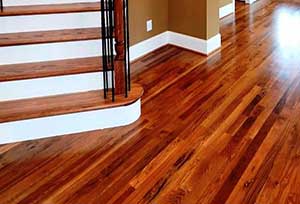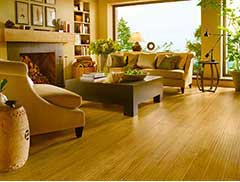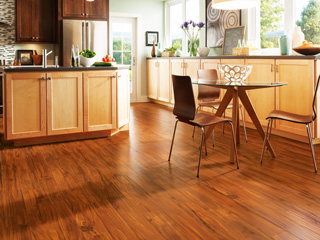 When it comes to enhancing the beauty and elegance of your home, choosing hardwood flooring is an excellent choice. With its timeless appeal and durability, hardwood flooring can transform any space into a warm and inviting environment. However, choosing the right hardwood flooring for your home’s style and needs can be a daunting task. With a wide variety of wood species, finishes, and installation methods available, it’s essential to consider several factors before making a decision. In this article, we will explore the key considerations that will help you select the perfect hardwood flooring for your home.
When it comes to enhancing the beauty and elegance of your home, choosing hardwood flooring is an excellent choice. With its timeless appeal and durability, hardwood flooring can transform any space into a warm and inviting environment. However, choosing the right hardwood flooring for your home’s style and needs can be a daunting task. With a wide variety of wood species, finishes, and installation methods available, it’s essential to consider several factors before making a decision. In this article, we will explore the key considerations that will help you select the perfect hardwood flooring for your home.
Determine Your Style and Aesthetic Preferences
The first step in choosing hardwood flooring is to determine your home’s overall style and aesthetic preferences. Are you going for a modern, contemporary look, or do you prefer a more traditional and rustic ambiance? Consider the existing interior design elements, such as furniture, wall colors, and decor, to ensure that the flooring complements the overall style of your home. For a contemporary style, you may opt for sleek and minimalist hardwood flooring, while a rustic style may call for distressed or hand-scraped wood.
Select the Right Wood Species
 Different wood species offer distinct characteristics in terms of color, grain pattern, and hardness. Some popular hardwood species include oak, maple, cherry, walnut, and hickory. Oak is known for its durability and versatility, while maple offers a lighter and more consistent appearance. Cherry and walnut provide rich, warm tones, while hickory boasts a unique and distinctive grain pattern. Consider the look you want to achieve and the level of traffic in your home to select a wood species that suits your style and lifestyle.
Different wood species offer distinct characteristics in terms of color, grain pattern, and hardness. Some popular hardwood species include oak, maple, cherry, walnut, and hickory. Oak is known for its durability and versatility, while maple offers a lighter and more consistent appearance. Cherry and walnut provide rich, warm tones, while hickory boasts a unique and distinctive grain pattern. Consider the look you want to achieve and the level of traffic in your home to select a wood species that suits your style and lifestyle.
Understand Hardness and Durability
The hardness of hardwood flooring is measured using the Janka hardness scale. Higher Janka ratings indicate greater hardness and durability, making the flooring more resistant to dents and wear. If you have a busy household with pets, children, or high foot traffic, choosing a harder wood species like oak, hickory, walnut & cherry would be a wise choice. Softer wood species like Pine, Douglas Fir, Birch & Cedar will require more maintenance & are best for lower traffic areas. However, keep in mind that harder woods can be more challenging to install which could increase the installation cost. Red Oak is of medium hardness & is ideal for most homes. Another durability factor is the plank thickness. Planks come in varying thickness, the most common being 3/4 inch , 5/8 inch and 1 inch. Thicker planks will be more durable and long lasting.
Consider Finish Options
 The finish of hardwood flooring plays a significant role in its appearance, protection, and maintenance requirements. There are three main types of finishes: oil-based polyurethane, water-based polyurethane, and penetrating oil. Oil-based polyurethane provides a traditional and amber-like appearance, while water-based polyurethane maintains the natural color of the wood and dries faster. And water-based finish is odorless while oil-based finish creates strong fumes which can last days or weeks. Penetrating oil finishes offer a matte look and are relatively easy to touch up. Consider the level of sheen, color, and maintenance preferences when choosing the right finish for your hardwood flooring. There is also the choice between installing prefinished wood planks or unfinished where finishing is done on site. Unfinished is the fastest installation type and you know before installing exactly what the finished product looks like.
The finish of hardwood flooring plays a significant role in its appearance, protection, and maintenance requirements. There are three main types of finishes: oil-based polyurethane, water-based polyurethane, and penetrating oil. Oil-based polyurethane provides a traditional and amber-like appearance, while water-based polyurethane maintains the natural color of the wood and dries faster. And water-based finish is odorless while oil-based finish creates strong fumes which can last days or weeks. Penetrating oil finishes offer a matte look and are relatively easy to touch up. Consider the level of sheen, color, and maintenance preferences when choosing the right finish for your hardwood flooring. There is also the choice between installing prefinished wood planks or unfinished where finishing is done on site. Unfinished is the fastest installation type and you know before installing exactly what the finished product looks like.
Assess Installation Methods
Hardwood flooring can be installed using different methods, such as nail-down, glue-down, and floating. Nail-down installation involves attaching the flooring to a subfloor using nails, making it a popular choice for solid hardwood. Glue-down installation requires adhesive to secure the flooring to the subfloor, providing stability and reducing noise. Floating installation involves interlocking the flooring planks without attaching them to the subfloor. This method is suitable for engineered hardwood and offers versatility in terms of installation over various surfaces. Consider your subfloor type, budget, and personal preference when selecting the installation method.
Set a Budget
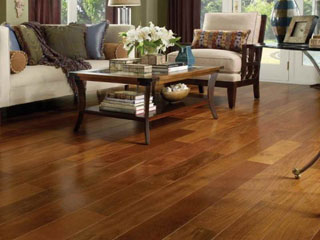 Hardwood flooring comes in a wide range of price points, depending on the wood species, quality, and finish. Set a budget for your flooring project to narrow down your options and ensure that you find a product that meets both your style and financial requirements. Remember to consider not only the cost of the flooring material but also the installation and any additional costs such as underlayment, trim, and maintenance products. It’s important to strike a balance between quality and affordability to ensure you invest in a hardwood flooring that will last for years to come.
Hardwood flooring comes in a wide range of price points, depending on the wood species, quality, and finish. Set a budget for your flooring project to narrow down your options and ensure that you find a product that meets both your style and financial requirements. Remember to consider not only the cost of the flooring material but also the installation and any additional costs such as underlayment, trim, and maintenance products. It’s important to strike a balance between quality and affordability to ensure you invest in a hardwood flooring that will last for years to come.
Research and Compare Suppliers
Once you have a clear understanding of your style preferences, wood species, finish options, and budget, it’s time to research and compare suppliers. Look for reputable suppliers who offer a wide selection of hardwood flooring options and have positive customer reviews. Visit their showrooms or browse their websites to get a better idea of the quality and variety of products they offer. Additionally, inquire about warranties, installation services, and any after-sales support they provide. By doing thorough research and comparing different suppliers, you can make an informed decision and choose a supplier that meets your needs and expectations.
Seek Professional Advice
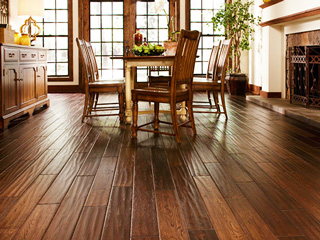 Choosing hardwood flooring can feel overwhelming due to the multitude of choices. If you’re unsure about certain aspects of hardwood flooring, don’t hesitate to seek professional advice. Flooring experts or interior designers can provide valuable insights and guidance based on their experience and knowledge. They can help you navigate through the options, suggest suitable wood species and finishes, and recommend the most appropriate installation method for your specific requirements. Their expertise can ensure that you make the best decision for your home’s style and needs. If you’d like to really simplify your decision, here in New York at Gemini Floor Services we most often recommend Red Oak flooring, which is the American standard for a number of reasons which we cover here.
Choosing hardwood flooring can feel overwhelming due to the multitude of choices. If you’re unsure about certain aspects of hardwood flooring, don’t hesitate to seek professional advice. Flooring experts or interior designers can provide valuable insights and guidance based on their experience and knowledge. They can help you navigate through the options, suggest suitable wood species and finishes, and recommend the most appropriate installation method for your specific requirements. Their expertise can ensure that you make the best decision for your home’s style and needs. If you’d like to really simplify your decision, here in New York at Gemini Floor Services we most often recommend Red Oak flooring, which is the American standard for a number of reasons which we cover here.
Request Samples and Visualize
Before making a final decision, it’s beneficial to request samples of the hardwood flooring options you are considering. Samples allow you to see and feel the actual wood, assess its color and grain pattern, and visualize how it will look in your home. Place the samples in different lighting conditions and against your existing furniture and decor to get a better sense of how they will complement your overall interior design. This step can help you avoid any surprises and ensure that the chosen hardwood flooring aligns with your vision.
Consider Long-Term Maintenance
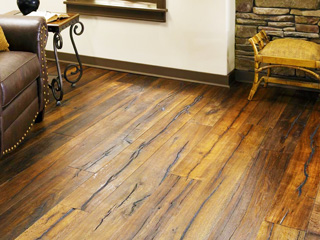 Lastly, consider the long-term maintenance requirements of the hardwood flooring options you are evaluating. Different wood species and finishes may have varying care instructions and maintenance needs. On average, most hardwood floors need to be refinished every 7-10 years but this all depends on the amount of traffic, the type of wood, plank thickness, the topcoat finish and how well the floor is maintained. Some hardwood floors last over 100 years.
Lastly, consider the long-term maintenance requirements of the hardwood flooring options you are evaluating. Different wood species and finishes may have varying care instructions and maintenance needs. On average, most hardwood floors need to be refinished every 7-10 years but this all depends on the amount of traffic, the type of wood, plank thickness, the topcoat finish and how well the floor is maintained. Some hardwood floors last over 100 years.
In conclusion, choosing hardwood flooring for your home’s style and needs involves careful consideration of various factors. By determining your style preferences, selecting the appropriate wood species, understanding durability and finish options, assessing installation methods, setting a budget, researching suppliers, seeking professional advice, requesting samples, and considering long-term maintenance, you can confidently select a hardwood flooring that will enhance the beauty, functionality, and value of your home for years to come. The following article compares the ten most common wood types and explains why Oak wood floors are the most common for all practical purposes. We also have an article about choosing stains & finishes here.
